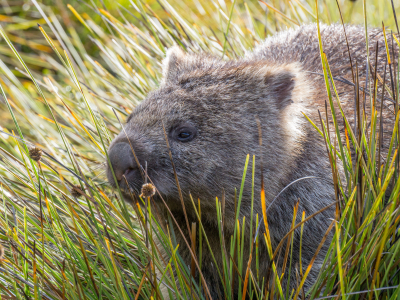
Audit Objective
This audit assessed whether Queensland public sector entities are effectively identifying, protecting and conserving threatened species. We assessed whether the Department of Environment and Science:
- identifies and lists Queensland’s threatened species
- is transitioning effectively to the Common Assessment Method (a nationally consistent method for assessing and listing threatened species)
- has strategies and plans in place to effectively protect threatened species and their habitat
- is effectively monitoring and reporting on threatened species outcomes.
Overview
Australia is home to between 600 000 and 700 000 native species, many of which are unique to Australia. Queensland alone is home to 85 per cent of Australia’s native mammals, 72 per cent of native birds, just over 50 per cent of native reptiles and frogs, and more than 11 000 plant species.
But Australia’s native flora and fauna are in decline. Environmental legislation aims to protect Australia’s native species by providing systems for identifying and listing species as threatened. This legislation restricts people from taking, keeping or using listed species. But not all threatened species are listed. For example, species are less likely to be listed if insufficient data are available to make an assessment.
Recommendations
We recommend that the Department of Environment and Science:
Listing
1. Proactively nominate species for listing or reclassification under the Nature Conservation (Wildlife) Regulation 2006. Classification reviews should be periodical.
2. Review the Nature Conservation Act 1992 to ensure timely listing of threatened species. This should include amending the legislation so that the minister’s decision of whether to add, delete or reclassify a species is reflected in the Nature Conservation (Wildlife) Regulation 2006 within a specified timeframe after receiving the Species Technical Committee’s recommendation.
3. Increase the transparency of the threatened species assessment process by publishing online:
- a public request to encourage nominations to add or delete species from the current list or to change the classification of listed species
- species nominations received, allowing the public to submit further information that may assist the Species Technical Committee’s assessment
- meetings dates and terms of reference for the Species Technical Committee
- Species Technical Committee’s assessments and recommendations, with supporting scientific evidence to inform future nominations.
It may be appropriate to refrain from publishing information that could result in further harm to the species.
Common Assessment Method
4. Further develop and implement its draft project governance framework and project plan for the Common Assessment Method project to ensure the department meets all its obligations under the Memorandum of Understanding.
5. Review the classification status of Queensland’s native species currently listed in the Nature Conservation (Wildlife) Regulation 2006 to prepare for the transition to the Common Assessment Method.
This includes reassessing Queensland’s threatened species classifications where they are inconsistent with the Commonwealth’s threatened species list.
Conservation planning and oversight
6. Develop an integrated and comprehensive conservation strategy for Queensland to meet the requirement of the Nature Conservation Act 1992.
The strategy should be supported by plans for:
- investment and implementation
- engagement and communications
- monitoring and evaluation.
7. Monitor and report on the population and trends of threatened species by:
- prioritising species for monitoring to make the most of available resources
- developing data collection protocols to ensure consistency and rigour
- improving data management and access
- reporting on recovery activities within government and by external partners
- reporting on the effectiveness of conservation management outcomes.


